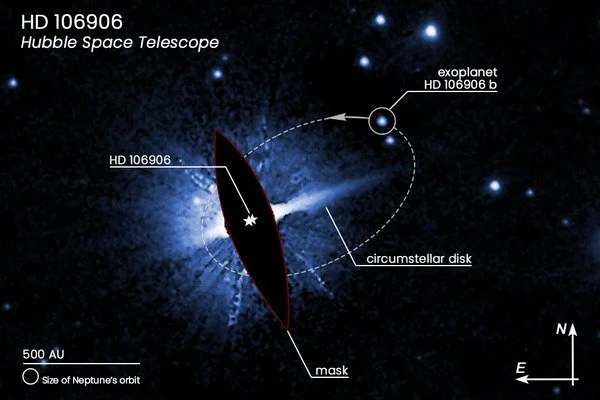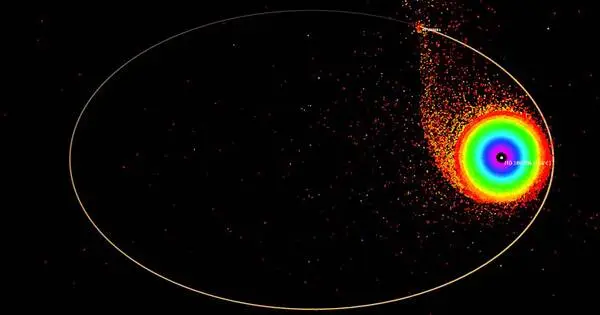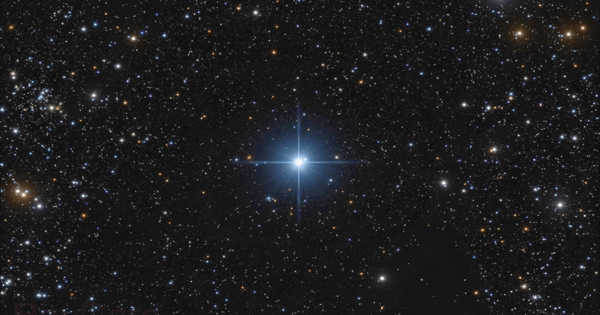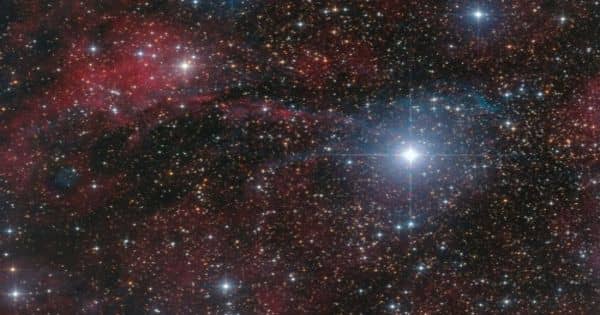HD 106906 is a binary star system located in the constellation Crux, about 300 light-years away from Earth. The primary star is a young, massive F-type star, while the companion is a lower-mass, lower-luminosity object. The system is notable for its wide-separation exoplanet, HD 106906 b, which orbits the primary star at a distance of about 650 AU (1 AU is the average distance between the Earth and the Sun). The planet is a gas giant with a mass of about 11 Jupiter masses and an orbital period of over 15,000 years. The planet’s wide orbit and high mass have led to speculation that it may have formed at a much closer distance to the star and was later ejected to its current location.
HD 106906 is a binary star system in the Crux constellation in the southern sky. With a combined apparent visual magnitude of 7.80, it is too faint to be seen with the naked eye. Based on parallax, the distance to this system is approximately 337 light years, and it is receding from the Sun at a radial velocity of +10 km/s. It is a member of the Scorpius-Centaurus OB association of co-moving stars’ Lower Centaurus-Crux group.
This is a double-lined spectroscopic binary system made up of two F-type main-sequence stars with similar masses and an F5 V stellar classification. Their orbital period is under 100 days.

Planetary system
It is composed of a primary star, HD 106906 A, and a companion, HD 106906 B. The primary is a yellow-white main sequence star of spectral type F, while the companion is a brown dwarf or a “failed star” that is too small to sustain hydrogen fusion in its core. The system is of particular interest to astronomers because it contains a massive exoplanet, HD 106906 b, that orbits the primary star at a distance of about 650 astronomical units (AU). The planet is thought to be a gas giant similar to Jupiter, but much more distant from its host star than any known exoplanet in our solar system.
A distant circumbinary planet, HD 106906 b, orbits the pair with a period of at least 3,000 years and a projected separation of 732±30 AU. An infrared excess around the binary is caused by a circumstellar debris disk seen edge-on. This has a distinct asymmetrical shape, extending 120 AU to the east and 550 AU to the west. The planet’s orbit is 39+20-15 degrees inclined to the debris disk, and the planet is visible nearly pole-on, with a large axial tilt.
















